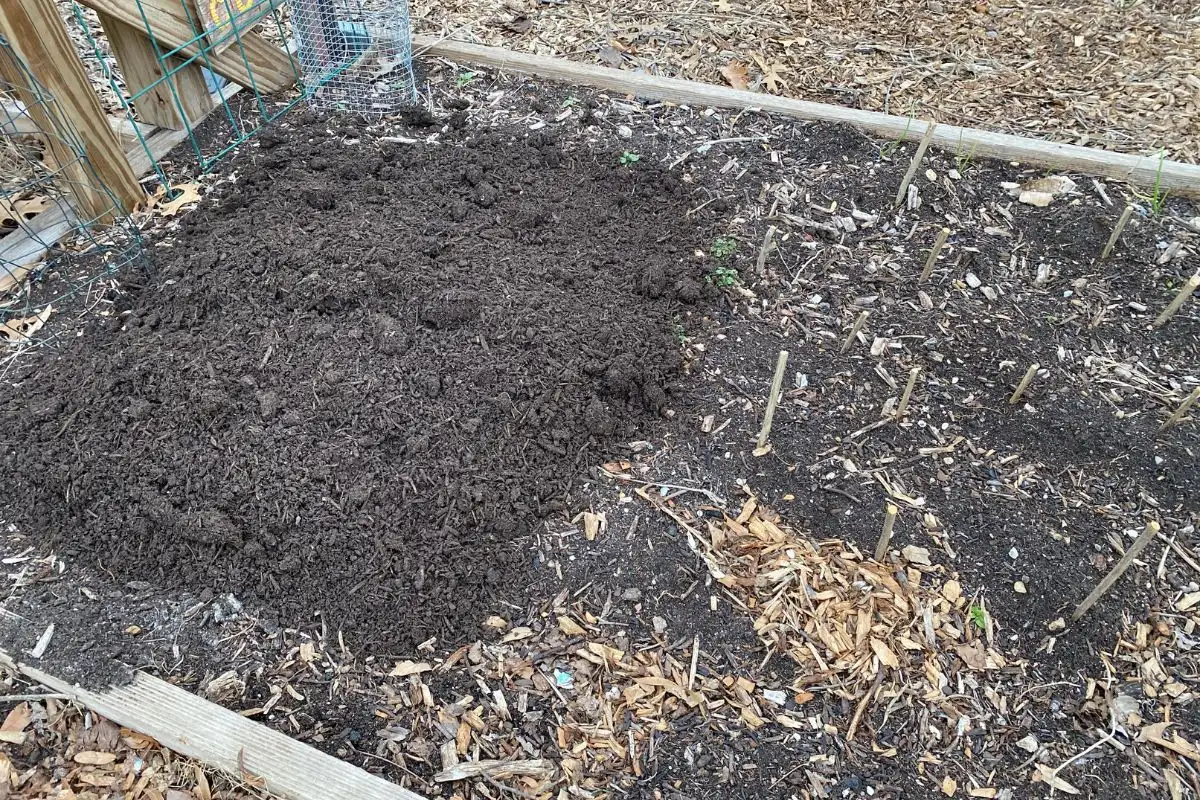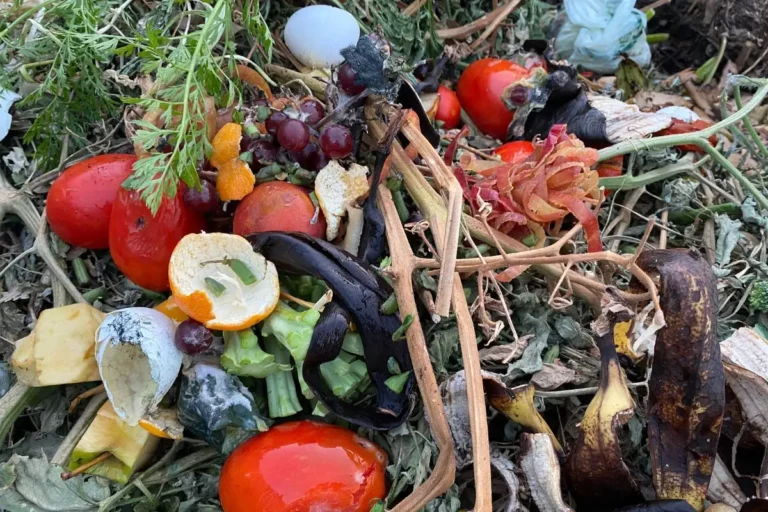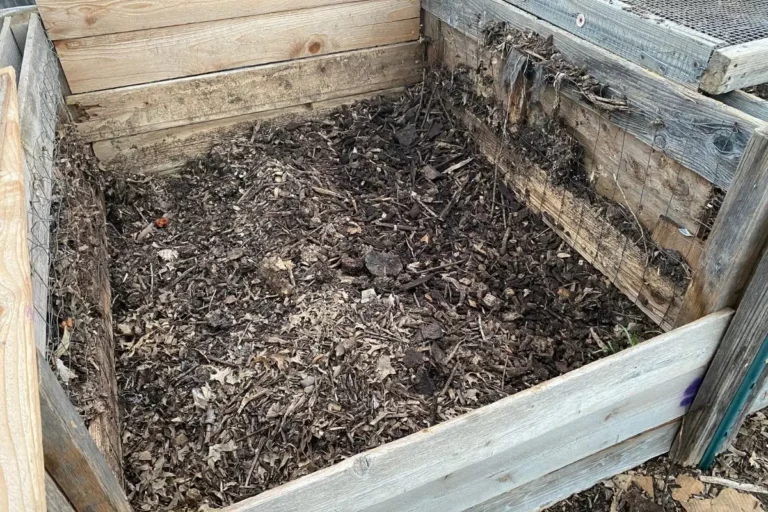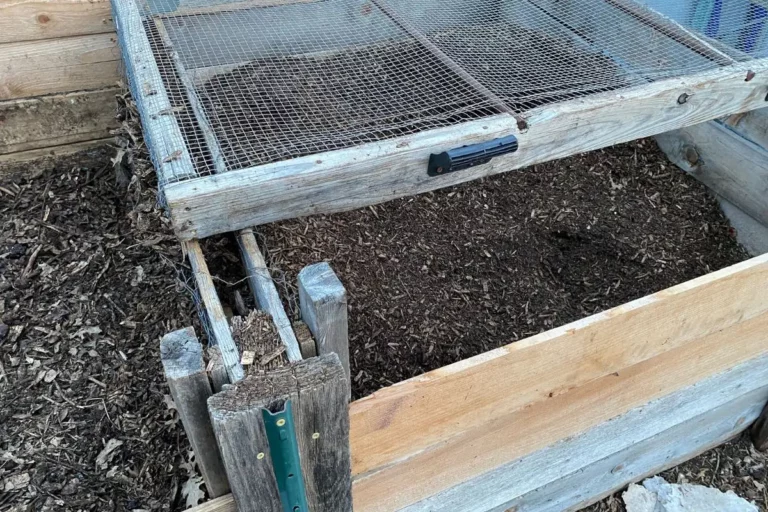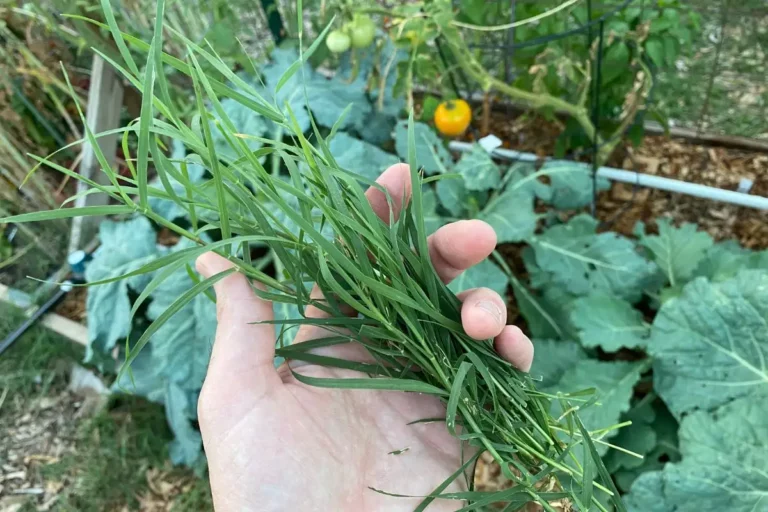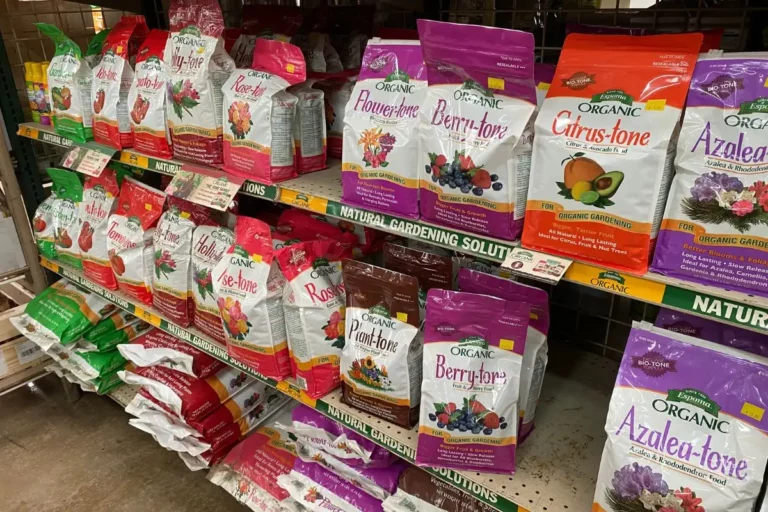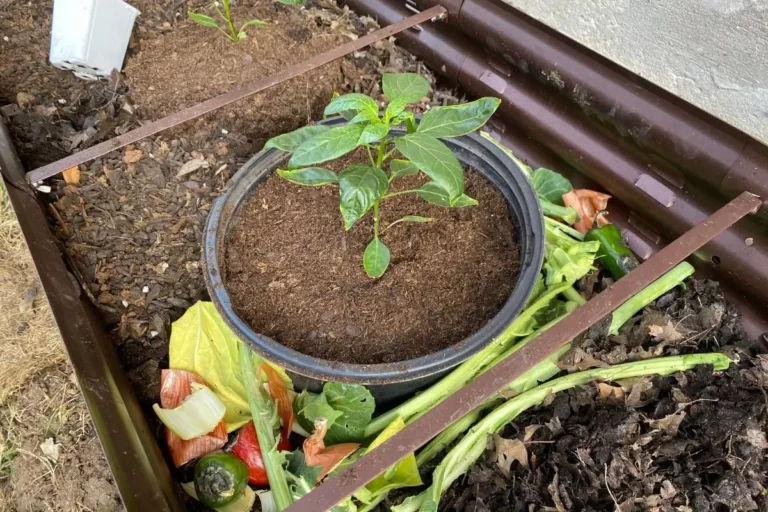Should Compost Be Tilled in or Mixed With Soil?
I love making my own compost since it’s a cheap, easy way to create nutrient-rich soil amendments for my garden.
When I first started gardening, though, I wasn’t sure how to add it to my garden beds. Should I layer the compost atop the beds or mix it directly into the soil?
For immediate improvement, mix compost into the topmost 6-8 inches of soil to enrich it quickly. For better-performing garden beds, top-dressing with compost is preferred since doing so won’t disturb existing plant roots or the sensitive ecosystem that exists beneath the soil’s surface.
Opinions vary when it comes to adding compost to existing gardens. Some people swear by mixing compost into the soil. Others recommend a more hands-off approach, shoveling the compost atop the soil and letting nature do its work.
My preferred approach borrows from both of these methods depending on the situation in my garden.
With that in mind, here’s what you’ll learn in this article:
- The pros and cons of tilling compost into your soil
- Why you might want to consider laying compost on top of your soil instead of tilling or mixing it in.
- Expert recommendations for adding compost to existing garden beds, whether you’re mixing it in or not.
By the end of this article, you’ll have a better understanding of how to use compost effectively, taking into account the specific needs and conditions of your garden.
With this information, you’ll be able to make a more informed choice that benefits not just your plants, but the soil they’ll call home throughout your growing season.
Should You Put Compost on Top of the Soil or Mix It In?

When it comes to the garden beds in my backyard, their performance tends to guide my composting strategy.
For high-performing beds—those areas of my garden where plants seem to take off and thrive without much fuss—I don’t dig into the soil.
Why mess with a thriving ecosystem of beneficial microorganisms and earthworms?
In these parts of my garden, I treat compost like mulch. I add a 2-3 inch layer on top of the soil in late fall. By the time spring rolls around, nature has integrated the compost into the soil, enriching it without any disruption.
But let’s talk about those low-performing areas in my garden, the spots where plants struggle.
Right now, I’ve got a corner of my property that’s not doing well. I got a load of soil from a local place, bought a bunch of containers from Costco, and hoped for the best. Unfortunately, the plants in that corner of my yard haven’t done much of anything, so the soil needs to be amended entirely.
This fall, I’m planning to mix compost into the soil as deeply as possible. The current soil isn’t in good shape—and I’ll eventually do a soil test to see what exactly it’s missing in terms of nutrients—but in the meantime, I think that that area will benefit from heavy amendments with compost.
I’m hoping that will provide an effective nutrient boost, making the soil more hospitable for plant growth next spring.
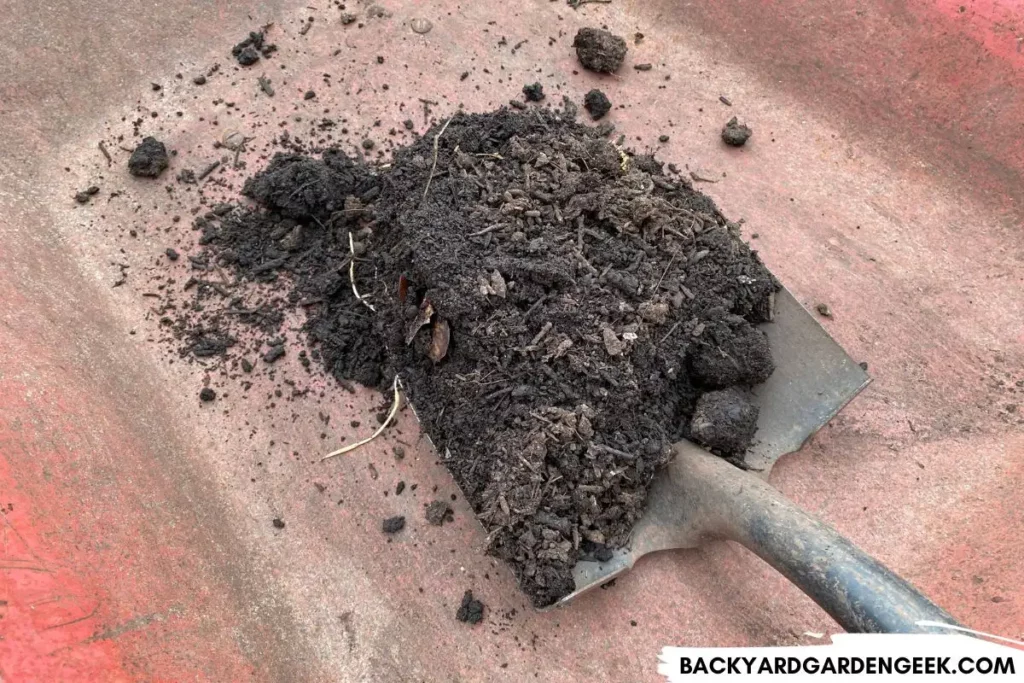
Now that I’ve shared some specifics, let’s look at the pros and cons of both layering compost atop the soil and tilling or mixing it in:
Advantages of Layering Compost Atop Soil
- Preserves Soil Structure: When you till or disturb the soil on your property, you can disrupt the structure of the soil itself (i.e. how native soil particles are held together). Layering compost on top of the soil retains its overall structure and integrity.
- Encourages Microbial Life: No-till gardens often have more beneficial microbes and earthworms underneath the ground since they’ve been allowed to proliferate naturally without destructive disruptions. Over time, these little garden helpers will naturally migrate into the compost and integrate it into the soil.
- Reduces Soil Erosion: A layer of compost acts like a protective shield against wind and water erosion, keeping things in their place (especially if you then cover your compost with mulch or wood chips).
- Keeps Weeds Seeds at Bay: There are certain plants you should never add to your compost—and adding weeds to compost can cause problems as well—but if you’ve got good compost and you later it atop your soil, you’ll help smother any weed seeds that might have otherwise sprouted among your plants.
Disadvantages of Layering Compost Atop Soil
- Slower Nutrient Absorption: Plants may not immediately benefit from the nutrients in the compost when it’s layered atop the soil. This is why you should do so in the late fall. That way, the compost has time to enrich the soil before the spring planting season arrives.
- Slower Decomposition: Your compost will continue to decompose once you lay it atop your soil, but the process will take longer since the compost is layered like mulch instead of getting incorporated into your soil.
- Possible Compost Runoff: If you’re dealing with garden beds that have any kind of slope, your compost could wash away during heavy rains. This is why I recommend covering compost with a thick layer of wood chips. They’ll hold the compost in place while also helping with water retention during the hot summer months.

If you need more immediate results—for instance, let’s say you’ve got a new part of your garden that’s performing terribly—then you might consider tilling in or mixing the compost into the top 6-8 inches of soil.
This will give your soil a quicker boost, but it’s best to do so when you’re swapping out plants so that you don’t disturb your current plants’ root systems.
Advantages of Tilling In or Mixing Compost Into Soil
- Immediate Nutrient Boost: Nearby plants receive a quicker nutrient boost, improving growth rates. The same goes for plants that are planted a few weeks after the introduction of compost. They’ll benefit in the long run from the additional nutrients you’ve added to your soil.
- Faster Decomposition: When mixed into soil, your compost will break down faster than if it’s layered atop the soil, freeing up nutrients sooner for plants to use.
Disadvantages of Tilling Compost Into Soil
- Disrupts Soil Structure: Tilling can disturb natural soil layers, potentially disrupting the makeup of your native soil and possibly impacting future plant growth.
- Harms Microorganisms: Tilling or disturbing your soil will usually harm beneficial microbes (and sometimes earthworms as well). When left undisturbed, your soil develops its invisible microbial ecosystem. When you disrupt that ecosystem, it’ll take time for a new one to develop.
As you can see, there are pros and cons to each method, so the approach I take with compost depends on the specific needs of different areas in my garden.
If a certain part of my garden is performing exceptionally well, why mess with a good thing? These areas get a gentle touch: compost layered on top to support their continued success.

But for those stubborn, underperforming areas, I take a more aggressive approach, amending the soil by mixing my compost as deep as possible.
Simply put, I don’t think one approach is necessarily better than the other. I think you’ve got to take a close look at your garden’s overall performance and decide whether you take the more conservative or more aggressive approach.
Best Ways to Add Compost to Existing Garden Beds
As I’ve noted above, when you top-dress your garden beds with compost, you’re making a long-term investment in the health and fertility of your soil.
This slow-but-steady strategy introduces a blend of vital nutrients, especially nitrogen and carbon, into your soil’s structure, but you should never expect overnight results. The nutrients in the compost will take several months to fully integrate into your soil.
Earthworms, rollie-pollies, and beneficial microorganisms will do the hard work during that time, breaking down the compost into its molecular components. As these natural processes unfold, the nutrients in your compost will slowly become available to your plants.
I’ve given you some pros and cons above, but let’s look at a few situations where top-dressing with compost excels:
- Moisture Retention: Adding compost as a top layer on your garden beds will have a mulching effect, which is particularly helpful during those hot summer months.
- Help with Established Gardens: For gardens that are already flush with mature plants, disrupting the soil could cause problems. In these situations, top-dressing will complement the existing ecosystem, enriching the soil without causing any damage below the surface. Just be sure not to layer it too thickly around the base of your existing plants, or you could inadvertently kill them!
- Keeping Soil Structure Intact: If you’re happy with the soil on your property, why mess with it? Top-dressing with compost will keep that soil intact while helping out in the long run.
- Lasagna Gardening Techniques: If you’re a fan of so-called “lasagna” gardening—where you build layers of organic materials to create a more fertile space for gardening—then top-dressing with compost is the way to go.
Unfortunately, layering compost atop your soil isn’t always going to solve your garden problems, especially in 2 specific scenarios:
Immediate Nutrient Needs: If you’ve had your soil tested, and you’ve noticed that it’s deficient in essential nutrients, layering compost will not help you in the short term. You’ve got a bigger problem that you’ve got to handle with a more aggressive approach to soil amending.
For a quick pick-me-up, consider using Alaska fish emulsion, which offers a mild but effective nutrient boost. A dose every 1-2 weeks can significantly benefit your plants.
Pest Problems: Unfortunately, compost won’t help your plants when it comes to pests. Adding compost to your garden will only help your current plants if you’re doing your best to ward off pest infestations.
Here are the most common pests I’ve seen in my garden over the past 4-5 years and some articles I’ve written on how to stop them with soapy water, neem oil, and other methods:
- Ants (fire ants in particular)
- Aphids
- Armyworms
- Cabbage Loopers
- Cucumber Beetles
- Leaf-Footed Bugs
- Harlequin Beetles
- Slugs and Snails
- Spider Mites
- Squash Bugs
- Stink Bugs
- Thrips
- Tomato Pinworms
- Whiteflies
If you’ve got these pests in your garden, all the compost in the world won’t save your plants unless you see an influx of natural predators or you ward them off yourself.
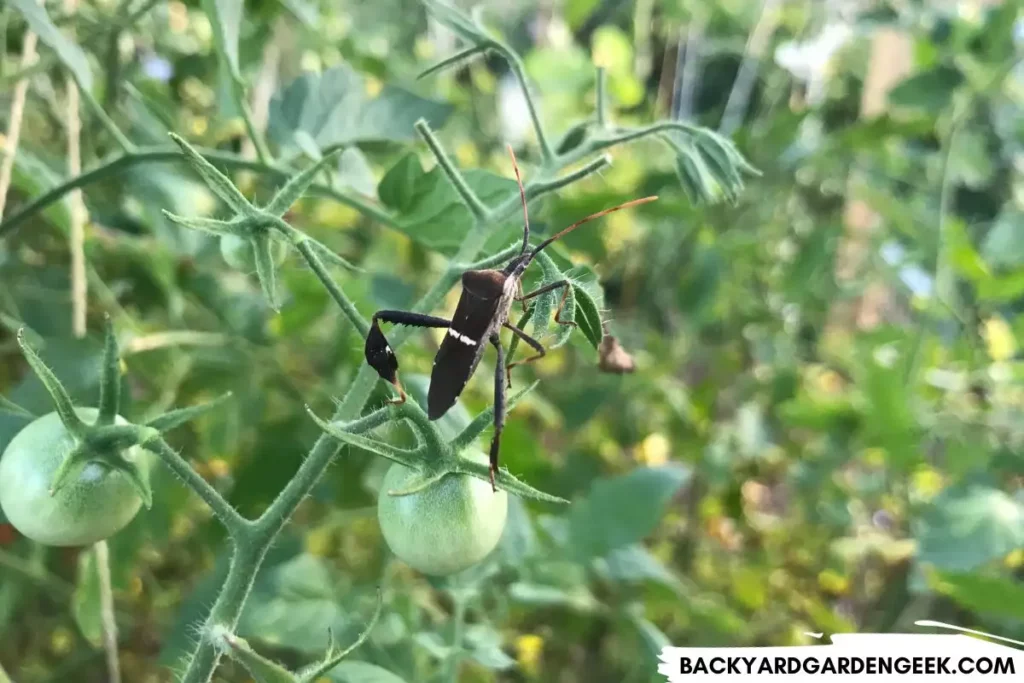
Generally speaking, when it comes to adding compost to my garden beds, I adopt a nuanced approach tailored to the specific needs of my garden.
If a section of the garden is flourishing, I see no reason to meddle much, so I give it a light touch of top-dressed compost.
But for underperforming areas, I’ll opt for more aggressive interventions, mixing compost into the soil and amending further based on what I’ve noticed or what soil tests have shown.
Remember, there’s no right answer when it comes to adding compost to your garden since it’s a mini-ecosystem on your property.
Pay close attention to your plants, see what their overall growth and external appearance are telling you, and respond accordingly for optimum results.
Related Articles
If you’ve enjoyed learning more about the composting process, you might like these articles:
- Composting Pizza Boxes: A Simple, Step-by-Step Guide
- Do Raised Beds Need Yearly Compost? (Here’s What to Do)
- Filling Raised Beds with Just Compost: Should You Do It?
- Is Dawn Dish Soap Safe to Compost?
- Is Your Leftover Pizza Compost-Friendly?
- Should I Put Cardboard at the Bottom of My Compost Bin?
- Should You Cover Your Compost Heap in Winter?
- What Goes at the Bottom of a Compost Pile?
